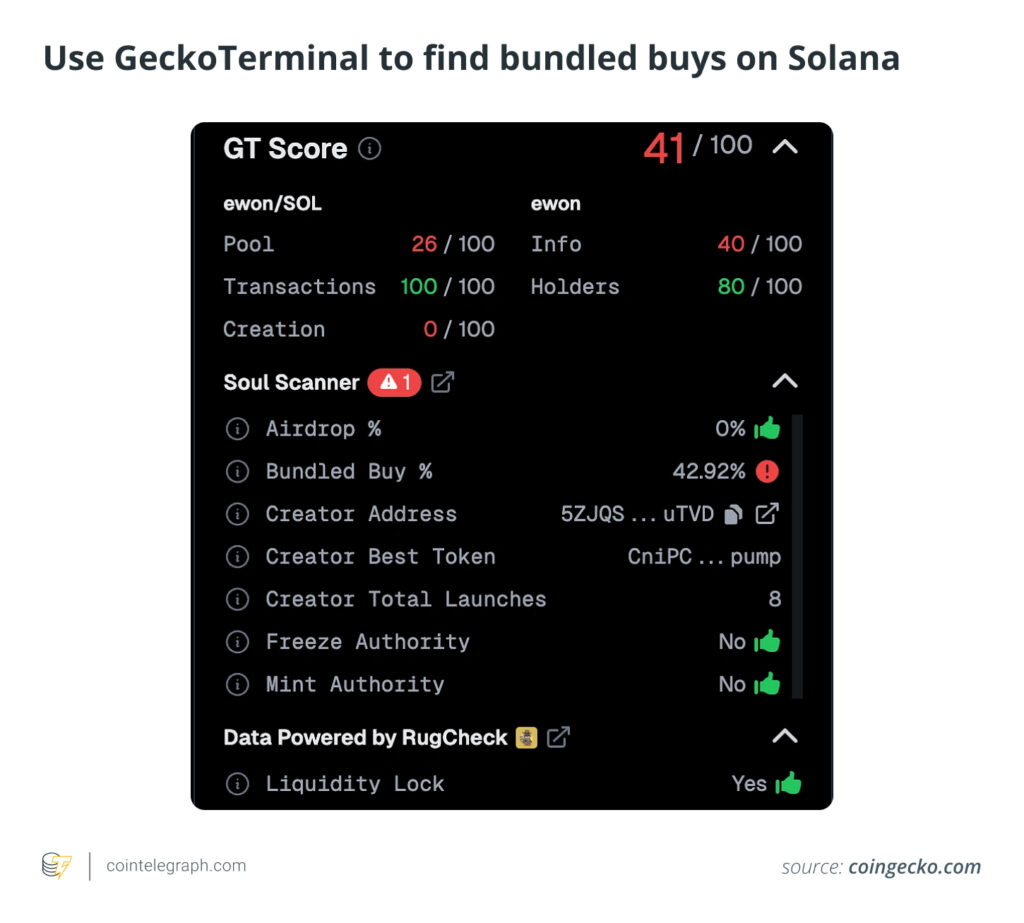In the ever-evolving world of cryptocurrency, one of the significant challenges facing new and even seasoned traders is the risk of becoming what is known as an “exit liquidity trap.” This term refers to a situation where unsuspecting traders unwittingly provide liquidity, essentially helping early investors cash out their profits, leaving later entrants stuck with devalued assets. With an astounding number of over 2 million tokens launched in 2024 alone, the scale of these traps has become a pressing concern for many in the crypto community.
Often driven by FOMO, or the fear of missing out, traders rush to invest in tokens that experience sudden surges in price, often without thoroughly evaluating their potential. This impulsive behavior can lead to costly mistakes, particularly when investors find themselves ensnared in pump-and-dump schemes, project failures, or regulatory issues. Alerting to the red flags of these traps, such as exaggerated claims, anonymous teams, and low liquidity, is vital for any crypto investor looking to protect their hard-earned investments.
Given the volatile nature of the cryptocurrency market, understanding the dynamics of exit liquidity is crucial. Without vigilance, traders may find that their purchases facilitate a profitable exit for insiders while they are left holding the bag. This overview aims to shed light on how to identify potential exit liquidity traps and safeguard against being caught in such predicaments, ensuring you approach cryptocurrency trading with knowledge and cautious optimism.
Understanding Exit Liquidity Traps in Cryptocurrency
Exit liquidity traps can significantly impact your cryptocurrency investments. Here are the key takeaways from this topic:
- Definition of Exit Liquidity: Refers to situations where new investors unknowingly provide liquidity for insiders to mitigate their losses, leaving these investors with depreciated assets.
- FOMO (Fear of Missing Out): Drives impulsive trading decisions, often leading investors to buy at inflated prices without proper analysis, creating vulnerability to exit liquidity traps.
- Warning Signs of Exit Liquidity Traps:
- Projects with exaggerated claims and low liquidity.
- Teams that are anonymous or lack transparency.
- Sudden price surges without clear fundamentals.
- Common Scenarios Leading to Exit Liquidity:
- Pump-and-dump schemes where price manipulation leads to crashes.
- Project failures or scandals causing panic selling.
- Regulatory crackdowns resulting in reduced trading volume.
- Exchange delistings limiting resale opportunities.
- Strategies to Avoid Exit Liquidity Traps:
- Invest in high market-cap coins for stability.
- Engage with coins that have active trading communities.
- Avoid overhyped coins lacking solid fundamentals.
- Use reputable exchanges to mitigate risks.
- Importance of Fundamental Analysis: Assessing real-world applications and utility of a cryptocurrency can help determine potential long-term viability and avoid liquidity risks.
- Behavioral Finance Awareness: Being cognizant of emotional responses such as greed and fear can help investors make more rational decisions and reduce impulsive trading behavior.
“The investor’s chief problem — and even his worst enemy — is likely to be himself.” — Benjamin Graham
Understanding Exit Liquidity Traps: Market Dynamics and Investor Pitfalls
In the fast-paced world of cryptocurrency, the challenge of avoiding exit liquidity traps looms large for investors. This phenomenon occurs when unsuspecting traders inadvertently provide the liquidity necessary for insiders to cash out at inflated prices, often leaving them with devalued assets. A notable advantage of understanding exit liquidity traps is that investors become more savvy about the market, enhancing their ability to make informed choices. By recognizing the red flags associated with these traps—such as exaggerated project claims, low liquidity, and anonymous teams—investors can take proactive measures to protect their portfolios.
However, the flip side lies in the risk of becoming trapped in an impulsive trading mindset spurred by FOMO (Fear Of Missing Out). This emotional drive can lead investors to make hasty decisions based on market hype instead of thorough analysis, often resulting in financial losses. Unlike more stable investment classes, the crypto market’s high volatility can amplify the impact of impulsivity, creating significant challenges for both novice and seasoned traders alike.
For those with less experience, the consequences of falling into an exit liquidity trap can be severely detrimental. New investors might be especially susceptible to schemes such as pump-and-dump operations or project failures, where they unknowingly contribute to the profitability of early adopters. Conversely, knowledgeable investors who have cultivated strong analytical skills can benefit by steering clear of illiquid assets and overly hyped projects, potentially avoiding sizable financial setbacks.
In terms of market positioning, cryptocurrencies with high market capitalizations tend to offer a safety net by providing better liquidity options. Investors seeking stability should prioritize assets backed by solid fundamentals, which reduces their susceptibility to exit liquidity traps. On the other hand, individuals who engage in trend-chasing or who rely heavily on social media for investment decisions may find themselves in precarious situations, potentially marketing their investments as exit liquidity for others.
One of the notable competitive advantages for savvy traders is the ability to leverage fundamental analysis and behavioral finance principles. Understanding the market’s emotional undercurrents allows those who are informed to make more calculated choices, reducing the chances of impulsivity and FOMO. This deliberate approach can serve as a lifeline in a largely speculative and chaotic market environment.
However, a lack of emotional awareness or restraint can bring about immediate complications. As inexperienced traders rush to capitalize on bold claims or sudden price surges, they risk becoming the exit liquidity providers for the very individuals they wish to emulate. This creates a cycle of loss for those who fail to conduct thoughtful research and analysis, ultimately undermining the stability of their portfolios.
In conclusion, understanding the dynamics of exit liquidity traps not only empowers investors to protect their assets, but it also highlights the critical importance of balancing emotional intelligence with market knowledge. By prioritizing education and employing strategic investment practices, traders can navigate the murky waters of cryptocurrency and emerge unscathed—or even thrive in a volatile landscape.
















